Collection Gallery
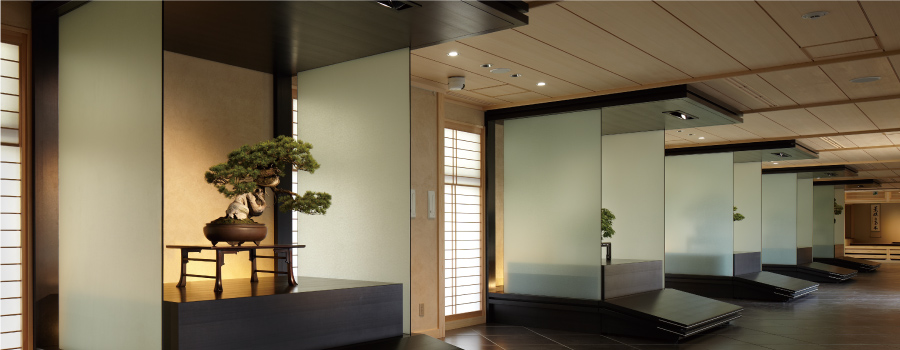
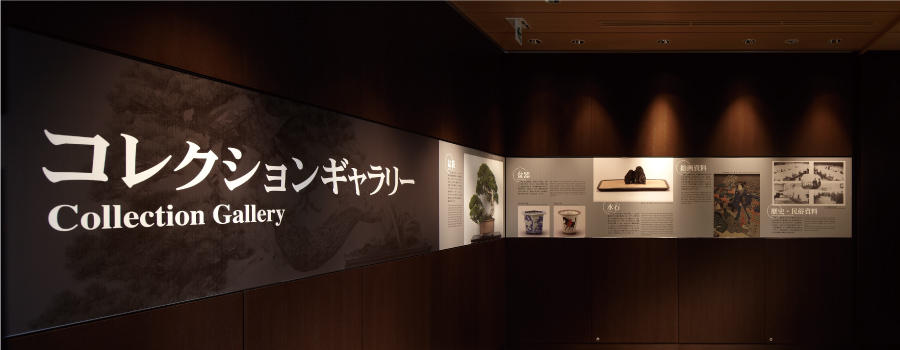
The Collection Gallery is made up of three areas named the Prologue Area, the Main Gallery and the Zashiki-kazari Area (bonsai display in traditional Japanese rooms).
The Prologue Area introduces parts of our collection through panels such as bonki (bonsai pots), suiseki stones, pictures and both historical and folkloric material. There are also panels explaining how to properly appreciate bonsai.
Next to the Prologue Area, the Main Gallery and the Zashiki-kazari Area unfold as a bonsai display space. Every week, around five bonsai suited to the season are exhibited in the Main Gallery and around three are exhibited in the Zashiki-kazari Area.
Zashiki-kazari
During the Muromachi period (1336AD-1573AD), basic styles were established for interior decorations such as hanging scrolls and other art pieces. In the Edo period (1603AD-1863), rooms were divided according to the ranking of their social functions into the shin, gyō and sō styles. Practices regarding how to decorate developed for each room. Zashiki-kazari have since played an important role as a space to entertain guests.
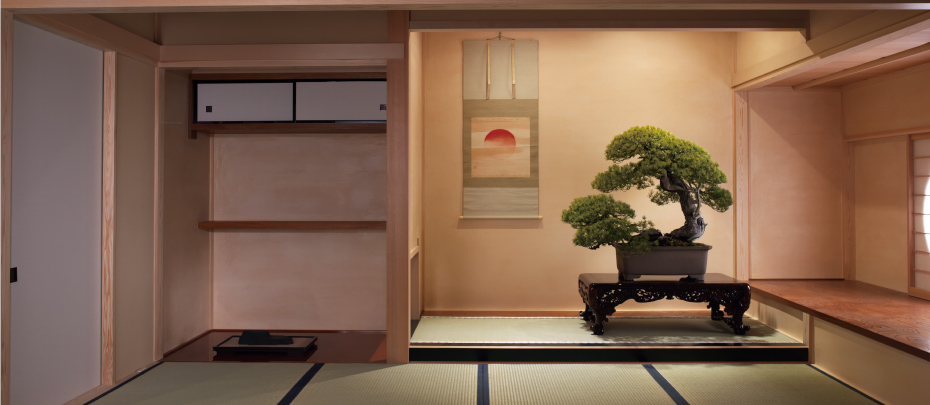
-
The Shin Style Room
The shin room is the most prestigious style of zashiki (a traditional Japanese room with tatami flooring). The alcove pillar, or toko-bashira, is made of straight-grained Japanese cedar, while the bottom rail, or shimo-gamachi, is coated with black Japanese lacquer. Suited to seat a person of high social standing, there are formalities in the arrangements of these rooms. For example, the tatami mats placed in the alcove, or tokonoma, will have decorative bindings on their edges in a consecutive pattern called kōrai-beri. Beneath the shelf in the side alcove, called the tokowaki-dana, various items, such as suiseki stones and incense burners, are displayed. Elegant bonsai are most appropriate for display in this style of room.
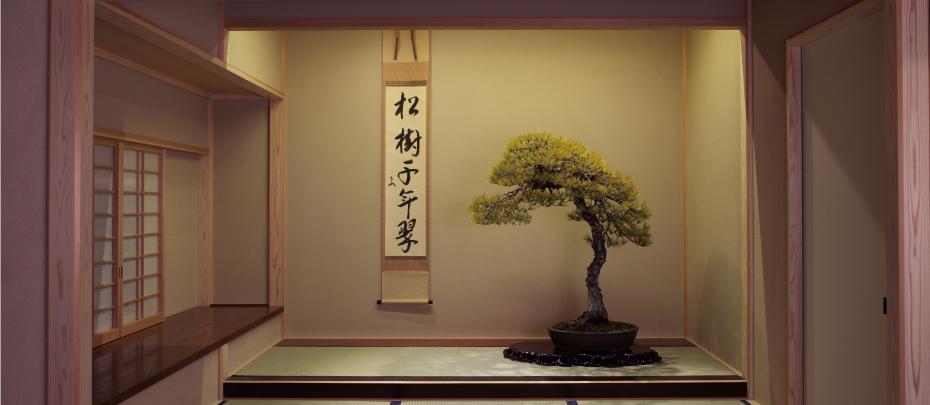
-
The Gyō Style Room
The three styles of shin, sō, and gyō find their origins in the three traditional styles of Chinese calligraphy. Compared to the strict shin style, the sō style is free and full of movement, while the gyō style falls between these two.
Most zashiki Japanese rooms made in the modern period are in the gyo style. Bonsai with curved trunks and flowering bonsai are suited to be displayed in this style of room.
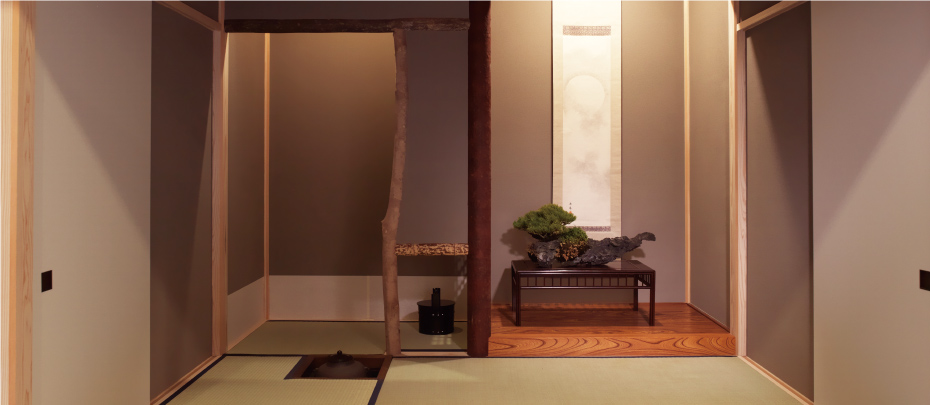
-
The Sō Style Room
The sō style room was designed mostly for use as a tearoom. Using different types of wood for the pillars and frames, the room is filled with variety to reduce feelings of confinement despite only having a limited space. The smaller tatami mat, called a daime-datami, on the left side of the alcove is a place to prepare tea. Bonsai with a dynamic feel such as literati style bonsai are well suited to be displayed in this room.



